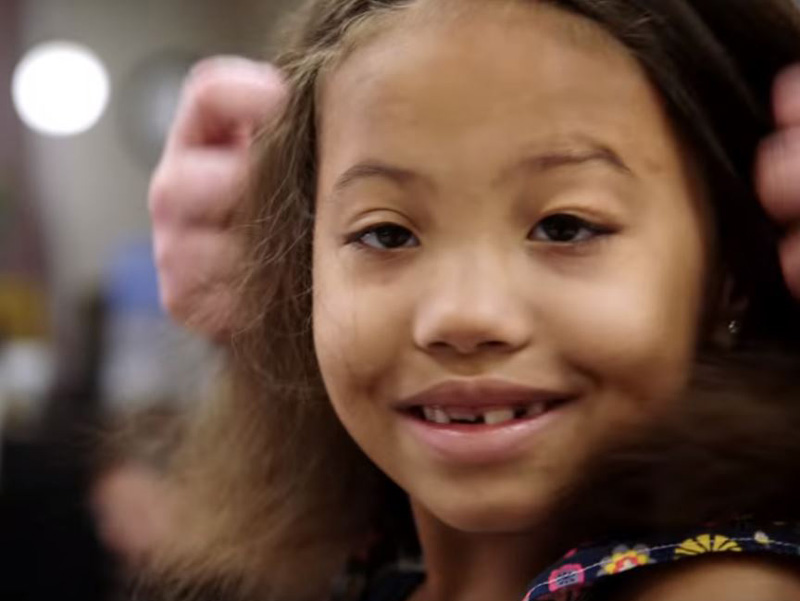When Breteni Morgan-Berg’s daughter Kamiyah Morgan was 8 months old, she had a habit of crawling fast, then freezing and tipping forward.
It wasn’t just the usual falling of a baby learning to walk. Breteni watched the stiffening-fainting-falling spells happen for a few seconds to a few minutes at a time, hundreds of times a day.
First Kamiyah got ear tubes. Then glasses. Then she saw specialists for seizures and degenerative diseases and narcolepsy. All tests came back negative.
The medical mystery that unfolded during the first several years of Kamiyah’s life became part of the first season of the Netflix documentary series “Diagnosis.” Breteni shared their story on CoRDS Cast, Sanford Research’s rare disease podcast, with host Ben Forred, director of clinical research for genetics and genomics at Sanford Research.
Related:
A trip across the country
Breteni thought she had exhausted all of her options when her doctor suggested applying for treatment at the National Institutes of Health. She gathered all of Kamiyah’s medical records in one place and got them shipped from her home in Vermillion, South Dakota, to NIH in Bethesda, Maryland. Then she waited.
It took two years for Kamiyah to be admitted. She underwent 10 days of tests. Still nothing conclusive.
Then a friend in the Undiagnosed Diseases Network mentioned that Netflix was casting for a new show. She said they were looking for people from a small place with a weird syndrome.
Breteni thought, “That’s us.” She emailed Netflix, but she wasn’t expecting much.
“They’re probably going to laugh at me, and I’m going to put it in my bucket of ‘I’ve tried everything,'” she said. “I heard back from them in 12 hours. And they’re like, ‘We really want to hear your story.'”
Answers in genetics
Just as Netflix finished filming its episode, NIH called Breteni and asked for a meeting. The reason for the meeting?
“We know what’s wrong with Kamiyah,” Breteni said.
Among the battery of tests she had undergone at NIH, Kamiyah had a genetic test as well. It revealed a mutation in the KCNMA1 gene.
People with this mutation can experience different symptoms of differing severity, according to one of Kamiyah’s pediatricians, Dr. Sotirios Keros. Some can have either movement disorders or epileptic seizures. Some, like Kamiyah, can have both.
In addition to these two conditions, many also have developmental delays and other neurological symptoms. Genetic testing can sometimes be the only way to diagnose medical conditions that aren’t obvious based on the symptoms, Dr. Keros said.
When Kamiyah first visited Dr. Keros, he had studied gene mutations and had training in epilepsy. But he had never heard of a patient with a medical condition caused by a KCNMA1 mutation.
Every neurologist he knows who treats this condition has only one patient with the condition, he said.
Browse all Sanford Health News podcasts
‘Finding people like us’
Dr. Keros has since left his practice at Sanford Children’s Hospital and is now connecting patients, families, the public and the scientific community as president and co-founder of the KCNMA1 Channelopathy International Advocacy Foundation.
Breteni was relieved to finally find her daughter’s condition had a name. But she thought their discovery had ruined the documentary and wasted Netflix’s time. On the contrary — the documentary crew kept following their story as it evolved.
“The Netflix show became about finding people like us,” she said.
Through the show, they connected with Dr. Keros and other KCNMA1 mutation researchers. They also connected with 17 other families living with the same condition, including a family across the ocean. Netflix flew Breteni and Kamiyah to Denmark to meet them.
Since the show was released Aug. 16, a dozen more people who think they may have this condition have contacted Dr. Keros. He said his organization has helped them go back to their doctors to discuss or arrange genetic testing.
Breteni feels grateful for the expertise and her family’s new KCNMA1 community.
“To have all these people on our side — and not just on our side because they’re going to have some sort of financial gain but because they care about Kamiyah — was huge,” she said.
This story was originally published on Sept. 18, 2019. It was updated Feb. 25, 2020.
Learn more
- How CoRDS gives hope and impacts research
- Rare disease group finds advocacy and looks for answers
- Man fundraises for research-study inspiration: his daughter
- Which genetic tests are out there? A comparison
…
Posted In Children's, Genetics, Health Information, Research, Vermillion
